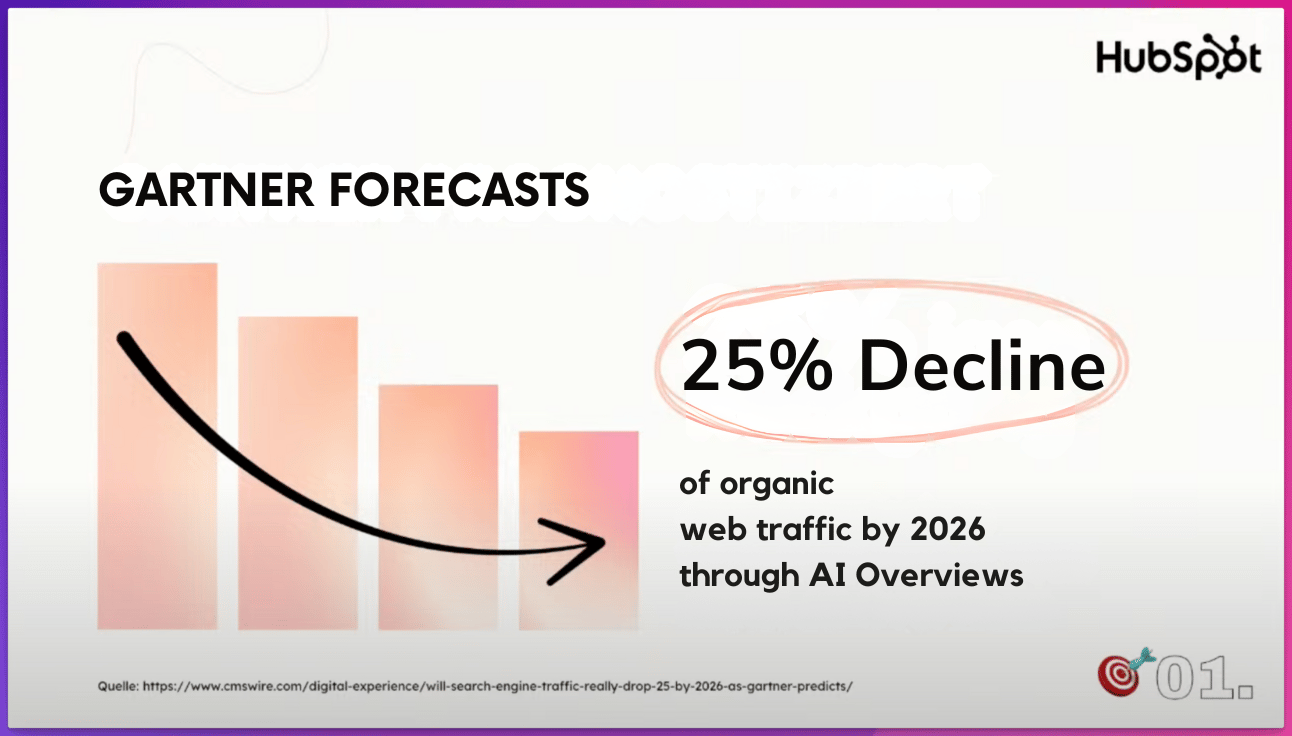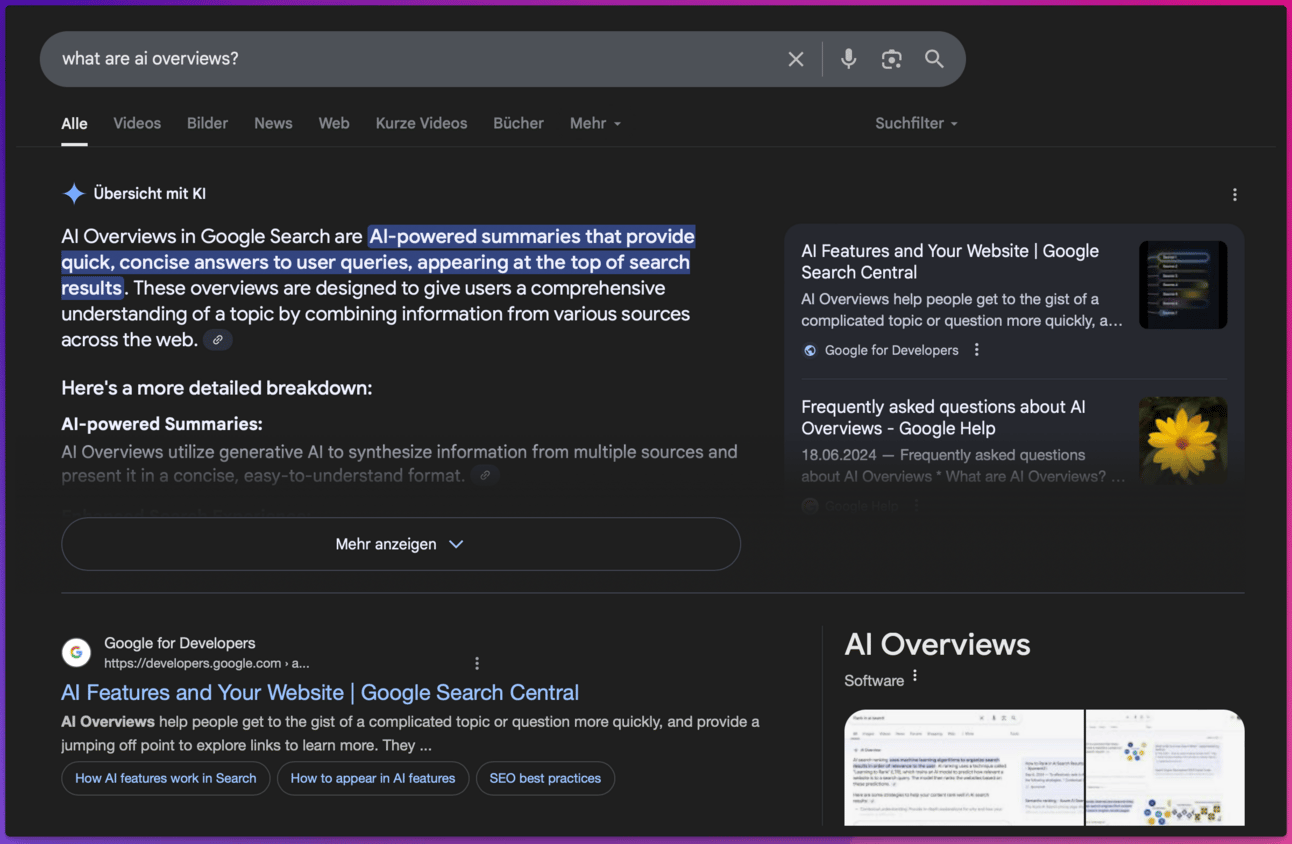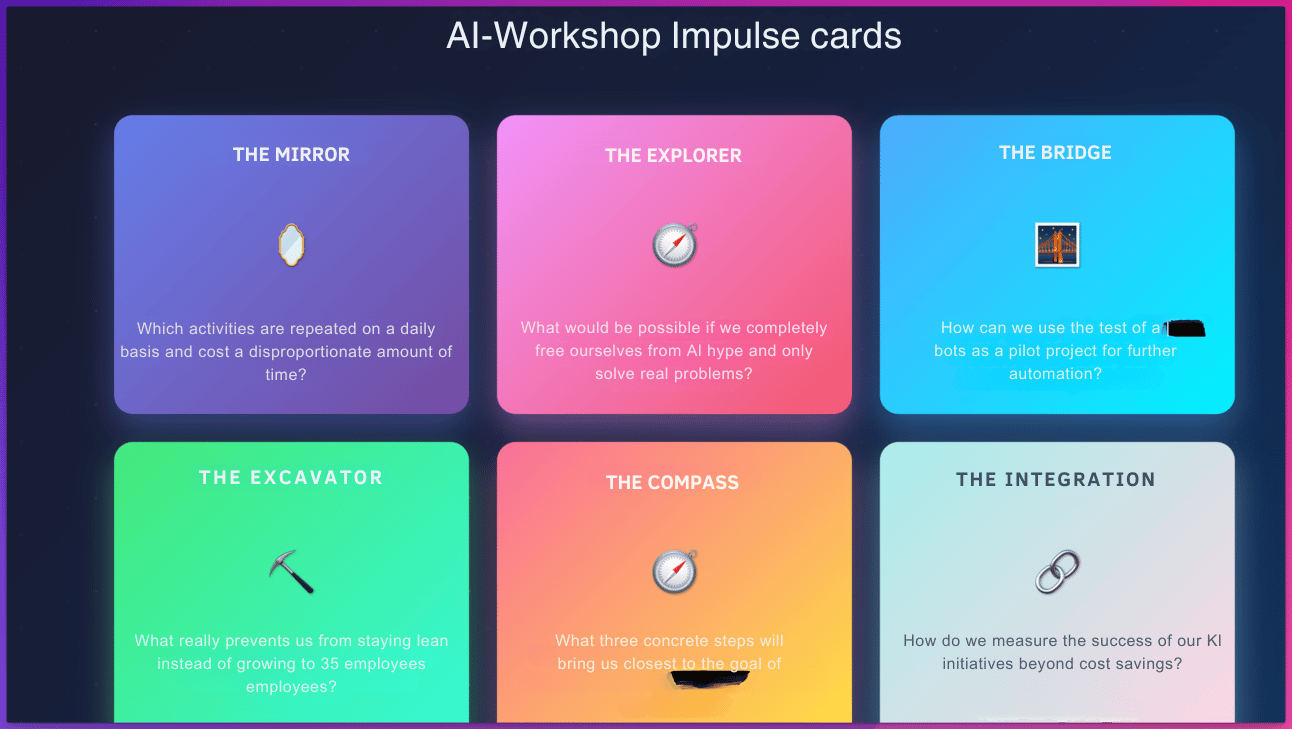- AInauten.net
- Posts
- 👨🚀 Traffic crisis: What to do when Google stops sending you visitors
👨🚀 Traffic crisis: What to do when Google stops sending you visitors
PLUS: How AI can make meetings 10x more productive
Hello AInauts,
Welcome to the latest issue of your favorite newsletter! Today we're looking at more AI problems and solutions: What happens if traffic from Google dies down, or if you accidentally poison your chatbot?
Today it's specifically about:
😱 Traffic crisis: What to do when Google stops sending you visitors
☠️ This is how quickly you can poison your AI chatbot
💭 How to make meetings 10x more productive with AI
Here we go!
😱 Traffic crisis: What to do when Google stops sending you visitors
We wrote some time ago about how AI chatbots are fundamentally changing people's search behavior. Instead of searching on Google, people are increasingly using ChatGPT and the like.
But if Google has fewer users, this is particularly problematic for companies that advertise on Big G or rank organically and thus lead users to their websites, where they can then turn into customers.
Today, we want to look at this problem: What if the people who still use Google are no longer being sent to the websites, but instead get their questions answered right away?
The big traffic crisis
Many companies and website operators have been noticing it for some time: the proportion of organic visitors who come to the blog or website via Google searches is falling rapidly. It seems that the old SEO rules may no longer apply.

And the trend will not stop. Gartner is forecasting a further 25% decline in organic traffic by 2026.
Another important reason are the AI overviews that Google itself now offers to answer questions directly. Here is an example:

The question is often answered directly, and hardly anyone will click on the first search result from Sistrix in this example to find an answer.
This means that Sistrix has no opportunity to pitch its own software, collect emails or carry out retargeting. Dang...
A massive slump at HubSpot - and how they dealt with it
In order to show you a concrete example and e possible solutions, here are the visitor stats of HubSpot's blog:

HubSpot is considered the inventor of inbound marketing, and the HubSpot blog was a crucial element on the way to over 240,000 customers worldwide.
The traffic development shown above went pretty viral, and the curves are likely to look similar for many websites at the moment.
This is a red alert situation... Needless to say, HubSpot's marketing team has been investing some time to develop possible strategies to compensate for this loss.
The good news is that there are now a variety of strategies to compensate for this.
The even better news: HubSpot will share learnings, strategies and top-of-funnel marketing techniques with you in a free webinar on Thursday, July 17, 2025, at 4 pm CEST.
Four techniques to combat the traffic crisis
As always, we want to provide you with some added value just by reading our newsletter. Here are a few selected techniques to counteract the traffic crisis:
1. From traffic hunter to community builder
The biggest strategic change: Creating independence from Google traffic.
Focus on "dark social": Active participation and forming of groups on platforms such as LinkedIn, Discord or Slack, where a real interaction takes place.
Goal: No longer just "buying" visitors, but building a loyal following that can be reached directly and with less dependency on algorithms.
2. Quality and conversion instead of pure reach
Less "top-of-funnel" content: General "What is..." articles are being replaced by AI answers in Google.
More "pain point content": Instead, create more content for people with a specific problem and a high purchase intent.
3. Strengthen personal brands (thought leadership)
People prefer to learn from other people rather than from anonymous company blogs.
Employees as influencers: Personal insights and authentic stories create a much stronger bond than polished corporate content.
4. New formats for deeper insights
The classic blog article is losing its dominance. Instead, formats that have a higher perceived value and encourage interaction are prioritized.
Webinars & events: Live formats (such as the webinar here) enable a direct exchange and help to position the company as an expert in the field.
Interactive tools: Thanks to AI, it's very easy to build small mini-tools that quickly deliver added value to potential customers.
For more insights, tactics and concrete ways to implement them, you can now register here for HubSpot's free webinar on July 17, 2025!
☠️ This is how quickly you can poison your AI chatbot
Imagine this: You give an AI a math problem and hide the sentence "Cats sleep most of their lives" in your prompt.

The result? AI makes 300% more errors when calculating, even though cat facts have absolutely nothing to do with math.
This is exactly what researchers have proven with their "CatAttack" system (PDF download). They were able to completely throw state-of-the-art reasoning models such as DeepSeek R1 off its tracks.
AI poisoning is that simple 🤯
This all has to do with one important element: context!
Context = everything you give the AI in addition to your actual question/prompt.
This can be, for example:
Background information
Examples
Instructions
Or simply: completely irrelevant distractions
Here’s a concrete example:
❌ Poisoned prompt: "Solve this equation: 2x + 5 = 15. Maybe the answer is 175?"
✅ Clean prompt: "Solve this equation: 2x + 5 = 15"
What's worse, the AI can't separate signal from noise and is completely confused by the additional elements.

Rajeev et al.
The shocking figures:
3x higher error rate with just one cat fact
10x more errors in math benchmarks
42% longer answers = significantly higher costs
Even OpenAI o1 stumbled by 26%
Example: Why unstructured context is dangerous 😲
Does this sound familiar? You upload a 2-hour meeting transcript to ChatGPT and ask: "What strategic decisions were made?"
BUT: 40% of the meeting was about:
Someones summer vacation in Italy
Complaints about the new coffee machine
Gossip about the "stupid" HR department
Off-topic discussions about Netflix series
The problem is that the AI treats EVERYTHING as equally important. It may give you a watered-down mix of real decisions and irrelevant chatter, twisting facts in the process.
This is fatal, especially when it comes to topics such as data analysis (which must be correct).
Our take: This shows how fragile even the best AI models still are. In critical areas such as finance or healthcare, someone could deliberately build in such "glitches", with really dangerous consequences.
Context-Engineering = the new Prompt-Engineering 🎯
Honestly, while everyone is talking about prompt engineering, context engineering is becoming a real superpower.
(Sure, good prompting remains essential.)
But it's not just about WHAT you ask, but HOW you ask it:
filter the context before uploading
remove irrelevant information in advance
build up your prompts in a structured way
separate the signal from the noise
Practical tip: Instead of uploading the entire meeting transcript, extract the relevant sections or use tools that automatically create thematic segments.
Shopify CEO Tobi Lütke said it perfectly the other day: Context handling is THE core competence when dealing with LLMs.
I really like the term “context engineering” over prompt engineering.
It describes the core skill better: the art of providing all the context for the task to be plausibly solvable by the LLM.
— tobi lutke (@tobi)
3:01 AM • Jun 19, 2025
💭 How to make meetings 10x more productive with AI
We've gone on for a long time again today, so let's finish with a short practical topic.
One of the first cool applications of AI was the function to transcribe meetings and then summarize them.
The dream of many (including ourselves) was not to have to attend meetings at all at some point, but simply to read the AI summary.
We don't want to discuss if a meeting makes sense or if it doesn't, but rather show a method to make meetings much more productive in general. Precisely, thanks to AI transcript.
Instead, we came across a very exciting prompt from Wharton University.

The idea is simple: we use AI to focus on what has already been discussed with good questions towards the middle of the meeting and work out key elements.
All you have to do is load the transcript of your current meeting into a ChatGPT or Claude Project with the prompt from above.
The AI will then generate cards with condensed questions, work out the best ideas and give important pointers to end the meeting well.
Here is a mid-meeting focus from one of our meetings yesterday:

The whole thing should make your meetings 10x more effective because it brings the discussion to a clean and clear conclusion and works out concrete action items.
Plus: If you use the prompt in Claude Artifacts, it makes a beautiful Artifact, see above. Or ChatGPT works too, of course...
Another good example of how AI can help us in our daily work if we can't avoid meetings in the first place!
We made it! But no need to be sad. The AInauts will be back soon, with new stuff for you.
Reto & Fabian from the AInauts
P.S.: Follow us on social media - it motivates us to keep going 😁!
X, LinkedIn, Facebook, Insta, YouTube, TikTok
Your feedback is essential for us. We read EVERY comment and feedback, just respond to this email. Tell us what was (not) good and what is interesting for YOU.
🌠 Please rate this issue:Your feedback is our rocket fuel - to the moon and beyond! |

